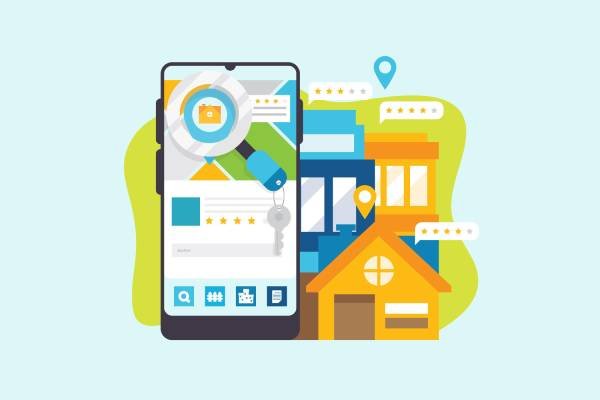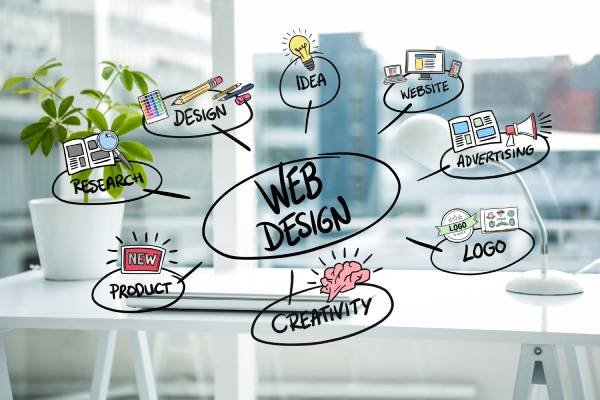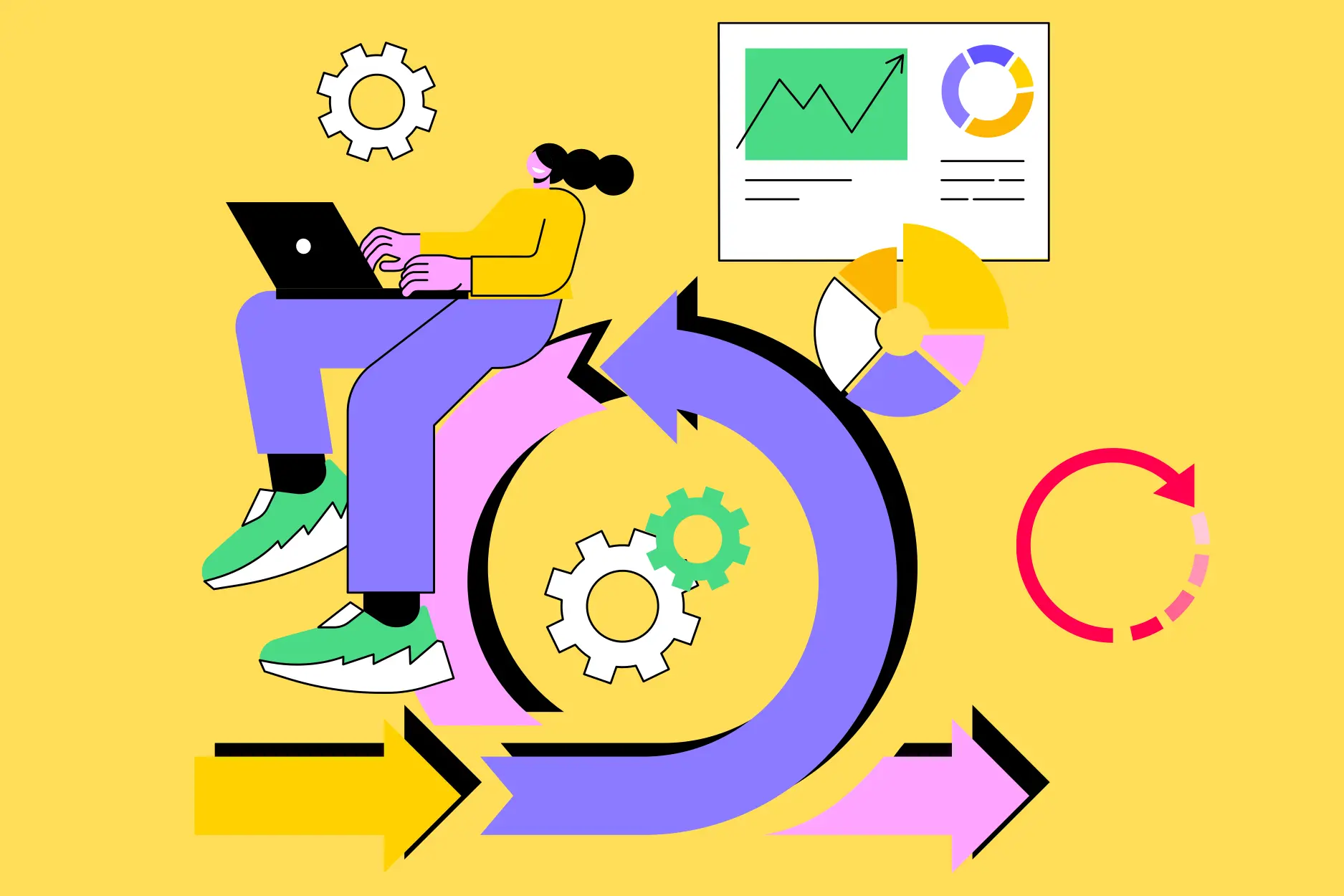Why Agile Methodology is Essential for High-Quality Mobile App Development
The competition to enter the mobile market has intensified as the issue of mobile app development has become widely discussed in the business world. Companies aim to seize every opportunity to enter the market quickly, differentiate themselves from competitors, and retain the quality and variety of the audience's prospective clients. The Agile technique is not new. The whole industry uses the Agile methodology for Mobile App development.
Experts have written extensively about Agile approaches in the past, and there is a wealth of material about Agile mobile app development services available on the Internet right now. Let's first discuss why an agile approach is desirable for mobile app development companies and why it may result in the production of high-caliber mobile apps.
What Is Agile Methodology for Mobile Apps?
The phrase "agile methodology" refers to a gradual and iterative approach to mobile app development that divides the whole cycle into several distinct tasks. The variety of operations is further divided into several smaller jobs, each of which functions independently inside the app development team. After that, each module is given to a committed, interdisciplinary team of experts who treat each one as a stand-alone mini-project.
When developing mobile applications, many teams can use this agile process to work on different app components at the same time. The project as a whole is reduced to a collection of distinct elements. The agile software development methodology not only reduces the risk involved but also gives developers complete freedom and flexibility to create a better product that adapts quickly to changes made after it is released.
[Also Read - Future of AI in Mobile App Development ]
Why utilize the Agile Process for App Development?
Agile methodology for mobile app development facilitates the creation of a project management system and agile development process that are very effective and reliable for software engineers. It undoubtedly helps agile software development companies and teams overcome some serious obstacles to smooth development across numerous operating systems, such as the disparate expectations of different user classes.
The most popular approach for assisting app startups and development companies in staying focused on producing high-quality applications quickly and efficiently is called agile. Agile dramatically lowers a project's total risk and enhances value throughout the development process.

1. High-quality Product
Software testing was supposed to happen before the launch, but with agile, testing is incorporated throughout the whole development process to ensure a high-quality product. Continuously testing each module allows for modifications and lowers the possibility of running across a bug while the project is being quality-tested as a whole. Additionally, it assists mobile app developers in examining the app's aspects at each stage of development and making necessary adjustments to deliver high-quality services.
2. Personalization
When developers choose agile development best practices, they may work on user-driven solutions and tailor the entire app development process to their preferences. Therefore, customization is another justification for using agile methods in the development of mobile applications.
The agile methodology for the mobile app approach keeps you covered when developers are looking for different ways to create and deploy a mobile application while incorporating the newest technology into the development process.
3. Quick Return on Investment
Rapid application development is achieved through the agile development method, which is supported by the iterative nature of the app features that are quickly produced and implemented. The agile development technique enables you to drive ROIs ahead of time, in contrast to the waterfall development methodology that was previously in use, which required you to wait until the app project was finished before even looking at return on investment value. The stakeholder plays a critical role in the agile app development process, maintaining open communication with the project scrum master to prioritize features and demonstrate an aligned development approach.
4. Facilitates Quick Business Decisions
Quick changes in smartphone users' movements suggest that firms should employ agile process methodology to foster a higher degree of company agility. No matter what stage of app development you are in, the agile technique allows you to make adjustments without incurring additional costs in response to changing business demands or user trends. When developing a mobile app solution, the agile methodology will enable you to be free to work around a predetermined feature list. You may offer the application whatever shape you want, thanks to this improved commercial talent, which provides you with a competitive advantage.
5. Lower Dangers
The waterfall app development method that was previously in use carried a significant risk of failure. These included scope creep, budget shortages, delays in project completion, and inability to provide priority features.
Agile, on the other hand, uses a parallel test methodology that enables you to align the many issues associated with building mobile applications while concurrently developing other features. Because the agile software development process follows a scrum methodology, you can see and address problems in later phases of the process right from the start, thanks to the transparency it affords.
6. Increased output
The agile methodology's sprint-based workflow reduces the amount of time spent on in-depth daily conversations. Instead, it focuses on delivering a list of the most important app features at the end of each sprint. The team of mobile app developers uses teamwork to work toward goals with responsibility, which aids in fulfilling all deadlines. The unique collection of tasks chosen for certain periods enables the scrum master to monitor the progress of work in real-time and to manage the teams accordingly.
7. Provide mobile app development solutions of the highest caliber.
Quality remains the primary issue in the world of apps. The agile methodology for mobile apps makes it easier for mobile app developers to evaluate an app project in real-time and then make the required quality-based adjustments step-by-step, thanks to the collateral testing paradigm. In this regard, project managers are able to quickly incorporate and resolve any deviations in the requirements for mobile applications or the quality standards that must be upheld.
8. Using Responsive Technology
Agile sprints may be used in conjunction with the software update technique for the app to expedite the development timeframe by enabling the addition of new features and upgrades depending on user input.
The data-backed, consistent app update method introduced by the agile mobile development approach ensures that, even with app upgrades, the data remains spatially harmonic with the older data.
The agile development process itself has several forms. Although some companies primarily concentrate on Scrum, they also employ a blend of about five different Agile project Development approaches, depending on each project's needs.
Let's examine each of them to help you better grasp the different kinds and the outcomes you may anticipate from each.
[ Also Read - Complete Guide To Mobile App Marketing In 2024 ]
Types of Agile App Development Methods
1. Adaptive Software Development
This strategy applies to app projects that firmly belong to the short-span app project category and have changing needs. The technique uses procedures, including learning, speculating, and teamwork, to achieve this.
2. Using Crystal Techniques
This Agile methodology for mobile apps aids in app development by focusing on app properties like reflective improvement, frequent delivery, focus, close communication, easy access to expert users, and personal safety, with the aid of configuration management, automated tests, and recurring integrations. The method shines in the development of apps pertaining to individuals, communities, interaction, talents, abilities, and communication.
3. Development Focused on Features
This is the model-driven, agile technique used in the app development process. At the outset of the app project, the developers create a model that details the different features and their revisions.
4. Development using Lean Methods
It is one of the most popular agile approaches used in the creation of mobile applications. The goal of this idea is to manage risks and convert them into opportunities, thereby giving a company a competitive edge over its rivals.
5. Dynamic Systems Development Method
It's an agile development process that iteratively ensures that each phase is finished to the point where it can be advanced to the next. This process assists in providing functional systems in a short amount of time. Because the next stage of the process can be quickly implemented and does not interfere in any way with the delivery process, this approach helps to support scenarios that change frequently.
DSDM utilizes resources such as tools, expertise, and processes to aid in the timely delivery of new systems.
6. Scrum
Scrum is an additional agile methodology for mobile apps that applies adaptable process control to intricate software projects. It also employs growing and iterative techniques. According to the notion, knowledge is learned via time from mistakes committed in the long run, as we are unable to describe the project's final prerequisites at first. Its only focus is on monitoring the project's development and addressing issues that arise during regular meetings. One of the advantages of the agile methodology is that it helps in taking action as needed.
7. Excessive Scheduling and Programming
Here, the app project takes center stage above the documentation since it adheres to design principles and uses straightforward code. It, in turn, facilitates the understanding of the process for developers who join later.
Four groups and twelve practices form the basis of the technique. The four categories are revision, respect, feedback, and collaboration. This calls for the active involvement of every stakeholder, including our clients.
The methods include refactoring, the entire team, continuous integration, short releases, simple design, pair programming, test-driven development, communal code ownership, coding standards, system metaphor, and a sustainable pace.
Now that you are aware of the many forms of Agile Development Processes allow me to walk you through the approach we use to create and implement mobile apps using this technique.
8. Kanban
Kanban is a framework for the visual agile methodology for mobile apps. This framework is ideal if you desire openness across the whole project. A project may be organized into workflows, and each task's stage can be monitored to see how the project is progressing.
Everything in Kanban is outlined using a Kanban board. Workflow columns indicate the stages of a project. These workflows show the progression of activities from start to finish and can be labeled as "In Progress," "Under Review," or "Done."
Task cards are arranged in each column. They contain a task's details, including its title, users, due dates, associated files, progress percentage, and more.
The Kanban technique aids in the visualization of processes. Depending on how it goes, each task card passes via a separate process column. For instance, when you send a task card for approval with the title "Creating newsletters for clients," it will go from the "In Progress" column to the "Under Review" column. After the card has been accepted and given the all-clear by the relevant parties, it will be moved to the "Done" column.
One other important feature of Kanban is that it lets you create boundaries for work-in-progress. This implies that you are in charge of how many tasks each member of your team works on at any one moment. By doing this, resources are better used and are kept from burning out.
Key Features of Agile Project Management Tools
| Feature | Description |
|---|---|
| Project Views | Offers various perspectives on the project, including Gantt charts, Kanban boards, task lists, and calendars. |
| Task Dependencies | Enables visualization and management of task relationships, ensuring sequential work completion. |
| Task Prioritization | Allows ranking tasks based on importance or urgency to optimize workflow. |
| Project Reports | Provides insights into team performance, project progress, and key metrics. |
| Real-time Alerts and Notifications | Keeps stakeholders informed about project updates, deadlines, and changes. |
| Drag and Drop Functionality | Facilitates easy task reassignment, prioritization, and workflow adjustments. |
How Does the Agile Methodology for Mobile Apps Operate?
The use of an agile approach in mobile app development has the potential to revolutionize your company. However, what is the next step in implementing it throughout your organization?
This is a detailed procedure for using the agile approach.

1. Planning: The first step to a project's success is a solid plan. A plan makes a project's to-do list easier to follow. You plan for every sprint while implementing the agile methodology for Android applications. Which deliverables do you want to focus on completing in each sprint? Which projects must you complete from beginning to end? You should think about these issues in your regular team meetings. Identifying the critical sprints from the start is also essential.
2. Analyzing requirements: The next step is to examine the entire app development process. What kinds of materials will you need? How much of each? In this phase, you assign tasks to users to create an extremely clear process. This aids in determining whether workflow optimization and maximum benefit extraction are feasible.
3. Development: The actual labor is done here. However, managing everything in agile application development may be challenging. This is because priorities shift too fast, allocating resources to various activities at random. All you need to do is use the tool's dashboard to plan and organize your mobile app development process. So, you design workflows that specify the set of actions you need to take in order to successfully launch a product.
You may also assign assignments to team members and set deadlines for work to be completed. With a few clicks, the tool lets you swiftly modify procedures while working with agile development. This implies that assigning new tasks to team members and utilizing tags to prioritize work under each sprint will be simple. Team members can verify which tasks to work on when in this manner.
Additionally, as a manager, you may assign work to the appropriate people with effectiveness when you use the application to visualize team workload. This guarantees that at no point will you encourage team fatigue in order to meet project objectives.
4. Testing/QA: Testing includes a quality analysis of the features or functionalities created during a certain sprint. This is completed prior to submitting the app's prototype for approval to the relevant stakeholders.
5. Delivery: You give the app to the relevant stakeholders, customers, or clients after testing it for anticipated efficacy.
6. Review: In this section, you solicit the client's or customer's opinions and recommendations. You apply any necessary modifications when working on the app in the upcoming sprint.
Follow these easy steps in the upcoming quarter to watch for noticeable outcomes such as lower development expenses and more turnover!
[ Also Read - Role of DevOps in Mobile App Development in 2024 ]
Conclusion
Agile methodology for mobile apps has transformed the process of developing mobile apps. The Agile development approach has several benefits, including superior product quality, satisfied customers, and a quicker time to market. The Agile development methodology's iterative and collaborative approach allows the development team to adjust to changing client needs.
The Agile approach allows developers to get regular input for ongoing development, producing high-caliber apps that offer a remarkable user experience.
Turing's mobile app development services can transform your apps. We provide top-notch teams and industry professionals who utilize the best technology and an Agile approach to create next-generation apps that surpass our clients' expectations.
Frequently Asked Questions

Read more blogs

Time and Cost of Developing an AI like ChatGPT: Key Factors Explored
Explore the factors influencing the time and cost of developing an AI model like ChatGPT. Understand key considerations for successful AI ap

Guide to Successful Real Estate App Development: Features, Technologies, and More
Explore the advantages of developing a real estate app, key features, technologies to employ, and the importance of collaborating with a Rea

Custom vs. Template-Based Website Development: A Comprehensive Cost Comparison Guide
Explore the costs, pros, and cons of custom website development vs. template-based solutions. Make an informed decision for your online pres
